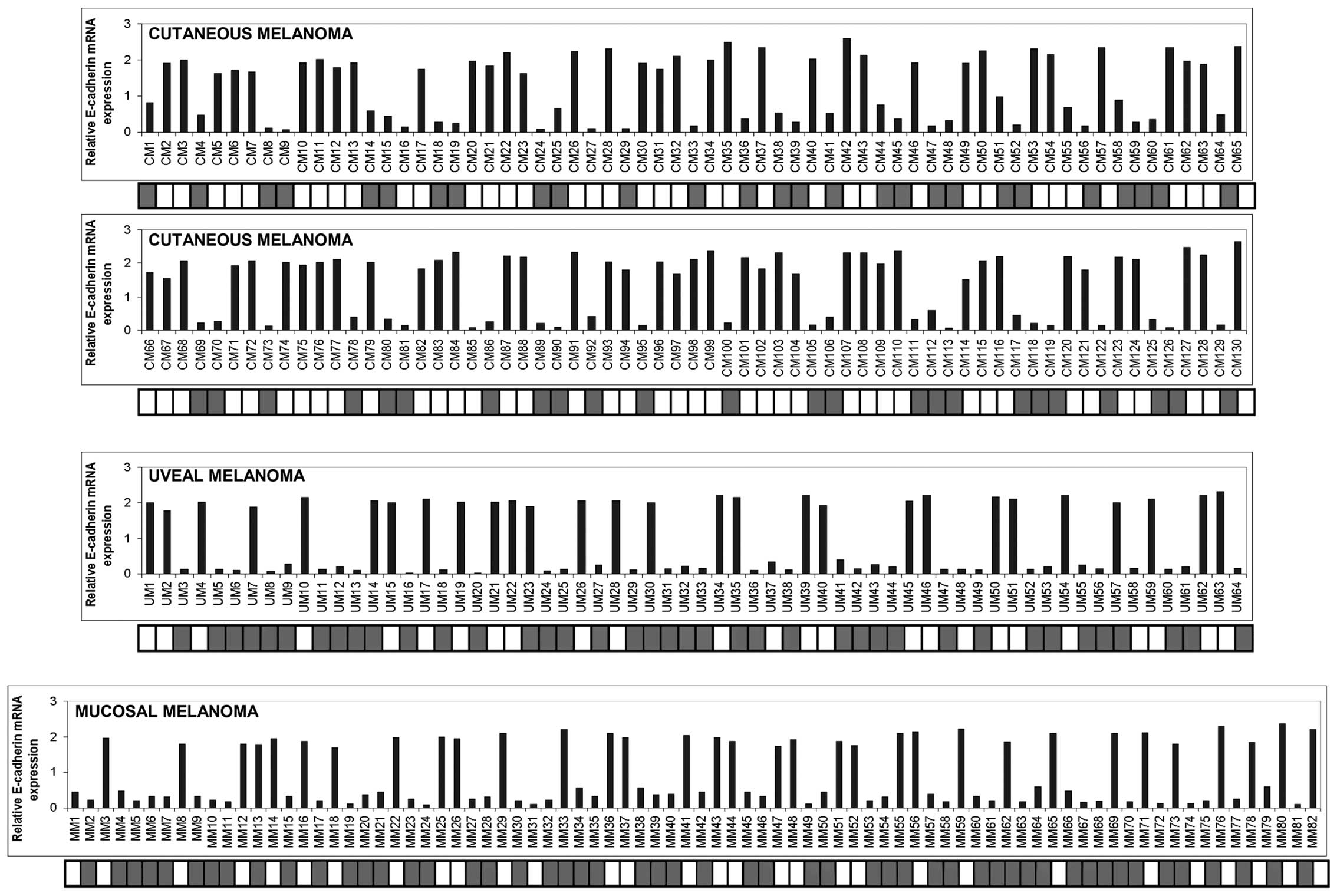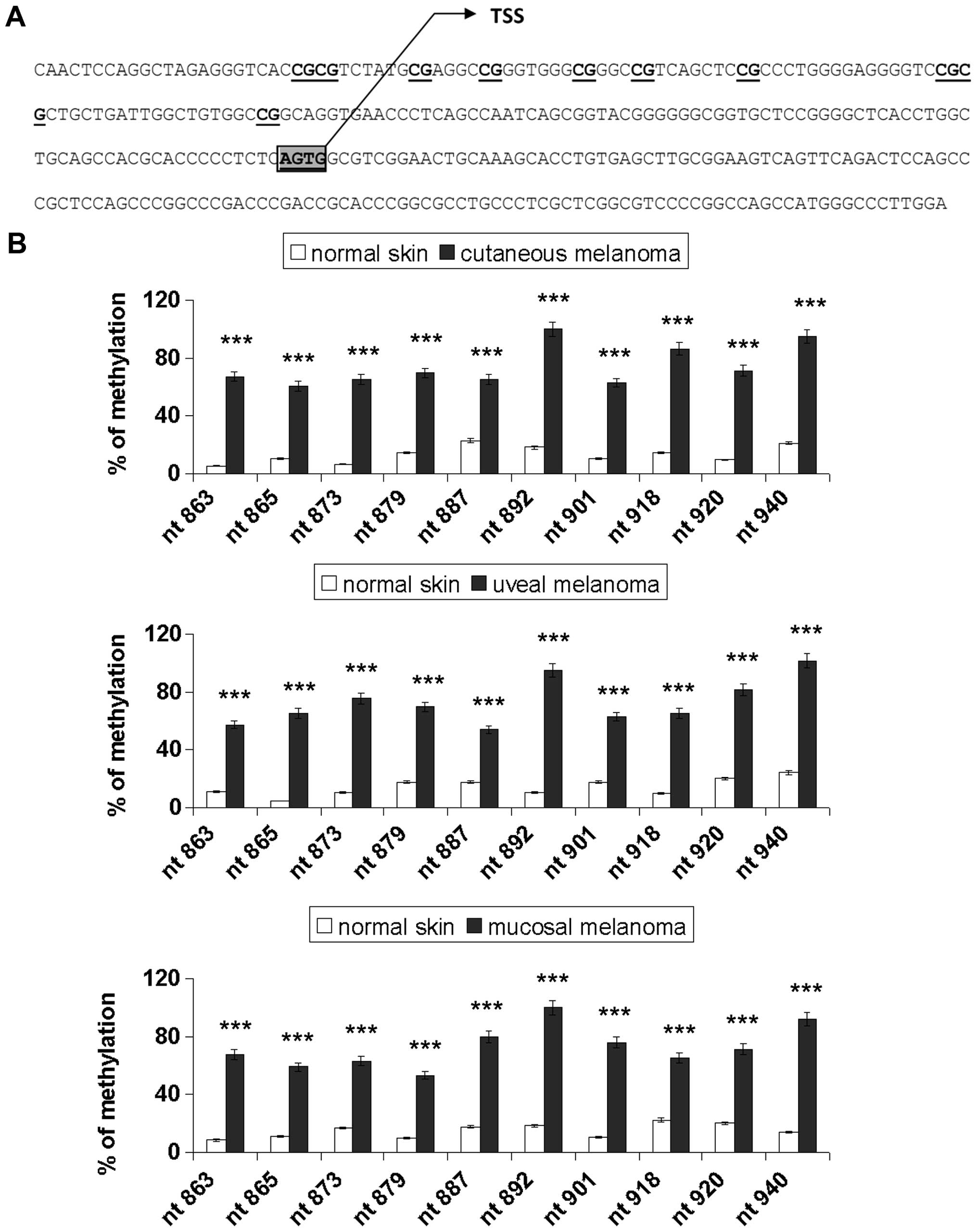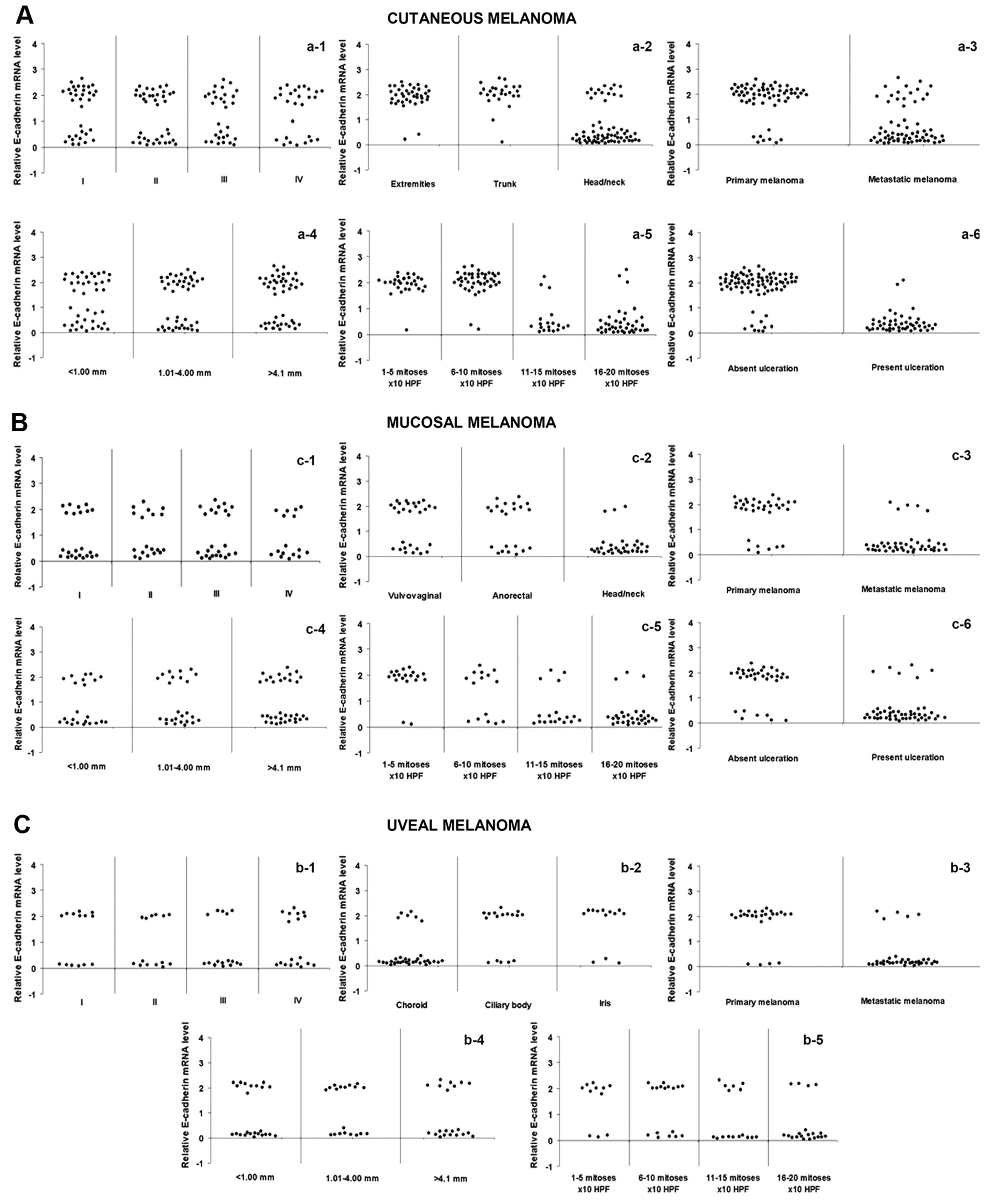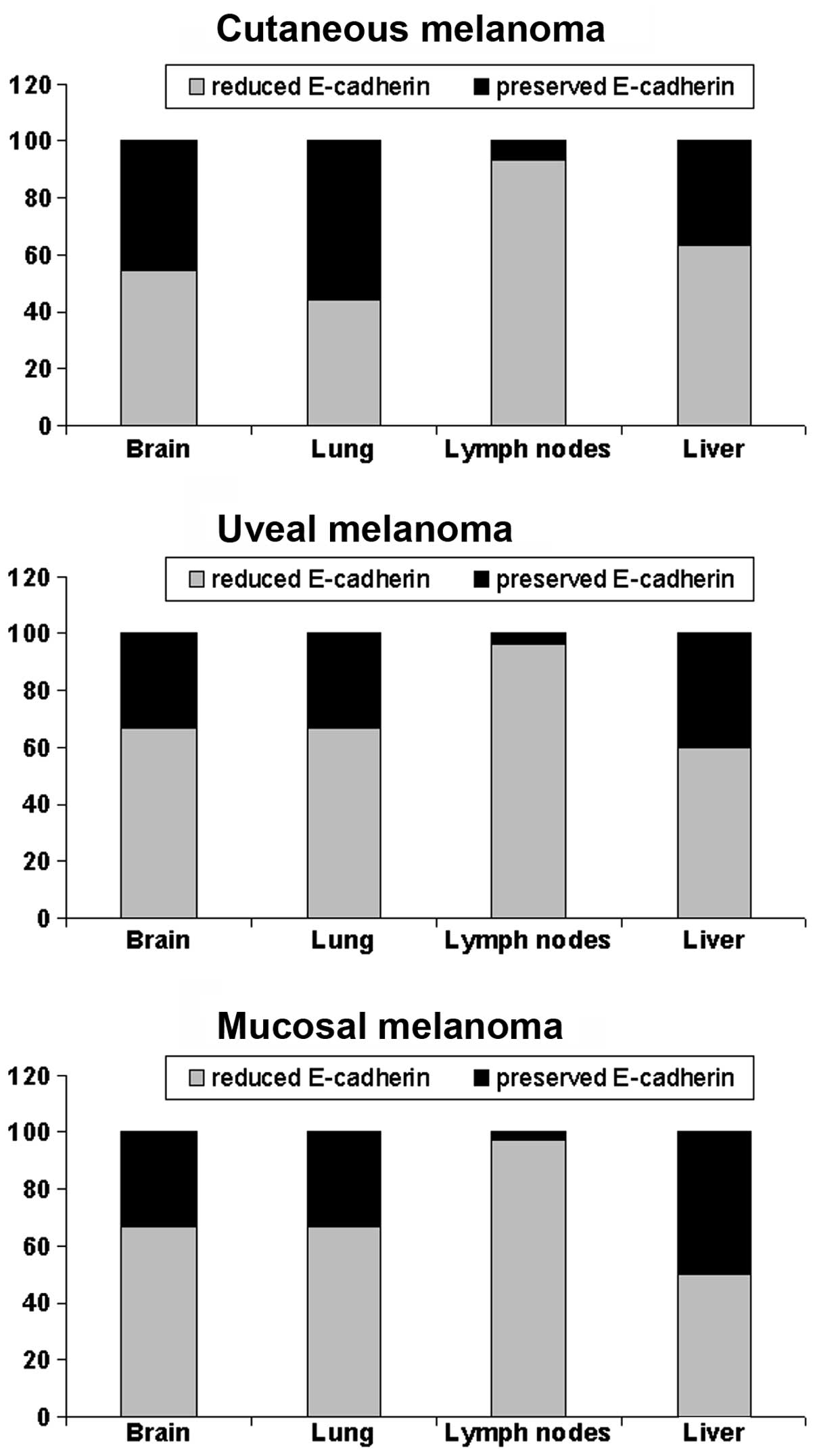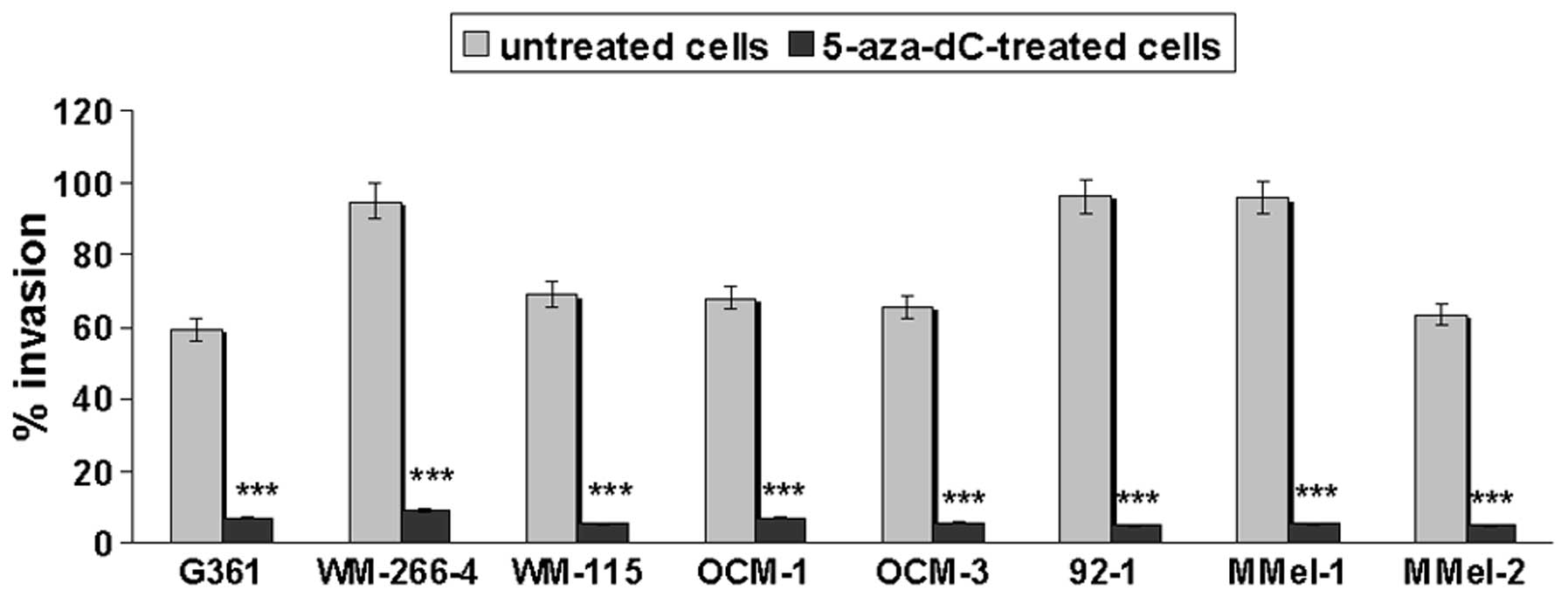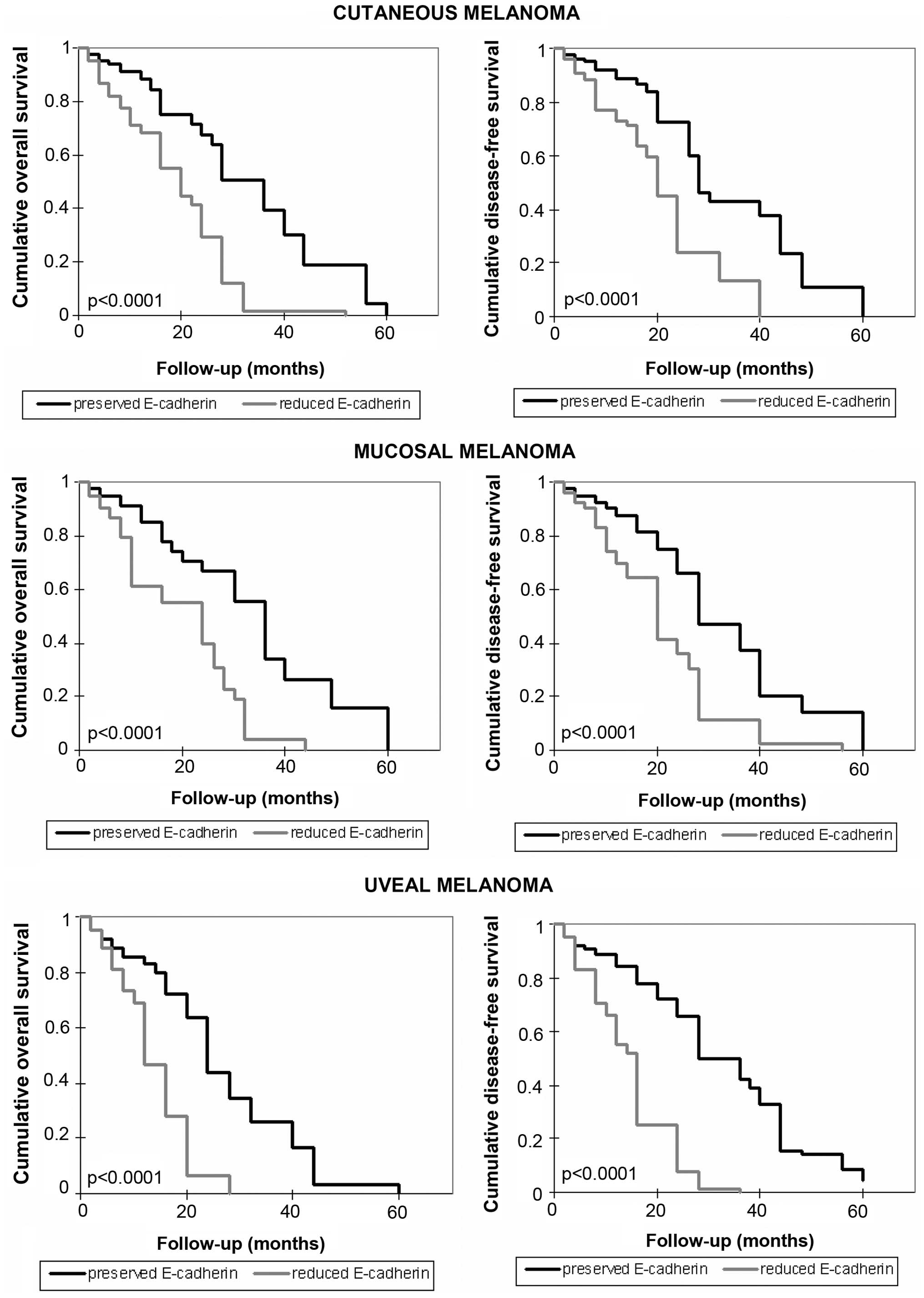|
1
|
Demierre MF, Sabel MS, Margolin KA, Daud
AI and Sondak VK: State of the science 60th anniversary review: 60
Years of advances in cutaneous melanoma epidemiology, diagnosis,
and treatment, as reported in the journal Cancer. Cancer. 113(Suppl
7): S1728–S1743. 2008. View Article : Google Scholar
|
|
2
|
Venza M, Visalli M, Biondo C, Lentini M,
Catalano T, Teti D and Venza I: Epigenetic regulation of
p14ARF and p16INK4A expression in cutaneous
and uveal melanoma. Biochim Biophys Acta. 1849:247–256. 2015.
View Article : Google Scholar
|
|
3
|
Venza I, Visalli M, Oteri R, Teti D and
Venza M: Class I-specific histone deacetylase inhibitor MS-275
overrides TRAIL-resistance in melanoma cells by downregulating
c-FLIP. Int Immunopharmacol. 21:439–446. 2014. View Article : Google Scholar : PubMed/NCBI
|
|
4
|
Venza M, Visalli M, Catalano T, Fortunato
C, Oteri R, Teti D and Venza I: Impact of DNA methyltransferases on
the epigenetic regulation of tumor necrosis factor-related
apoptosis-inducing ligand (TRAIL) receptor expression in malignant
melanoma. Biochem Biophys Res Commun. 441:743–750. 2013. View Article : Google Scholar : PubMed/NCBI
|
|
5
|
Venza I, Visalli M, Oteri R, Cucinotta M,
Teti D and Venza M: Class II-specific histone deacetylase
inhibitors MC1568 and MC1575 suppress IL-8 expression in human
melanoma cells. Pigment Cell Melanoma Res. 26:193–204. 2013.
View Article : Google Scholar
|
|
6
|
Venza M, Visalli M, Biondo C, Oteri R,
Agliano F, Morabito S, Caruso G, Caffo M, Teti D and Venza I:
Epigenetic effects of cadmium in cancer: Focus on melanoma. Curr
Genomics. 15:420–435. 2014. View Article : Google Scholar
|
|
7
|
Schneider MR and Kolligs FT: E-cadherin's
role in development, tissue homeostasis and disease: Insights from
mouse models: Tissue-specific inactivation of the adhesion protein
E-cadherin in mice reveals its functions in health and disease.
BioEssays. 37:294–304. 2015. View Article : Google Scholar
|
|
8
|
Andersen K, Nesland JM, Holm R, Flørenes
VA, Fodstad Ø and Maelandsmo GM: Expression of S100A4 combined with
reduced E-cadherin expression predicts patient outcome in malignant
melanoma. Mod Pathol. 17:990–997. 2004. View Article : Google Scholar : PubMed/NCBI
|
|
9
|
Kuphal S and Bosserhoff AK: E-cadherin
cell-cell communication in melanogenesis and during development of
malignant melanoma. Arch Biochem Biophys. 524:43–47. 2012.
View Article : Google Scholar
|
|
10
|
Graff JR, Gabrielson E, Fujii H, Baylin SB
and Herman JG: Methylation patterns of the E-cadherin 5′ CpG island
are unstable and reflect the dynamic, heterogeneous loss of
E-cadherin expression during metastatic progression. J Biol Chem.
275:2727–2732. 2000. View Article : Google Scholar : PubMed/NCBI
|
|
11
|
Venza M, Visalli M, Biondo C, Oteri R,
Agliano F, Morabito S, Teti D and Venza I: Epigenetic marks
responsible for cadmium-induced melanoma cell overgrowth. Toxicol
In Vitro. 29:242–250. 2015. View Article : Google Scholar
|
|
12
|
Venza M, Visalli M, Oteri R, Agliano F,
Morabito S, Teti D and Venza I: The overriding of TRAIL resistance
by the histone deacetylase inhibitor MS-275 involves c-myc
up-regulation in cutaneous, uveal, and mucosal melanoma. Int
Immunopharmacol. 28:313–321. 2015. View Article : Google Scholar : PubMed/NCBI
|
|
13
|
Herman JG, Graff JR, Myöhänen S, Nelkin BD
and Baylin SB: Methylation-specific PCR: A novel PCR assay for
methylation status of CpG islands. Proc Natl Acad Sci USA.
93:9821–9826. 1996. View Article : Google Scholar : PubMed/NCBI
|
|
14
|
Ribeiro-Filho LA, Franks J, Sasaki M,
Shiina H, Li LC, Nojima D, Arap S, Carroll P, Enokida H, Nakagawa
M, et al: CpG hypermethylation of promoter region and inactivation
of E-cadherin gene in human bladder cancer. Mol Carcinog.
34:187–198. 2002. View
Article : Google Scholar : PubMed/NCBI
|
|
15
|
Vleminckx K, Vakaet L Jr, Mareel M, Fiers
W and van Roy F: Genetic manipulation of E-cadherin expression by
epithelial tumor cells reveals an invasion suppressor role. Cell.
66:107–119. 1991. View Article : Google Scholar : PubMed/NCBI
|
|
16
|
Hsu MY, Meier FE, Nesbit M, Hsu JY, Van
Belle P, Elder DE and Herlyn M: E-cadherin expression in melanoma
cells restores keratinocyte-mediated growth control and
down-regulates expression of invasion-related adhesion receptors.
Am J Pathol. 156:1515–1525. 2000. View Article : Google Scholar : PubMed/NCBI
|
|
17
|
Liu S, Tetzlaff MT, Wang T, Yang R, Xie L,
Zhang G, Krepler C, Xiao M, Beqiri M, Xu W, et al: miR-200c/Bmi1
axis and epithelial-mesenchymal transition contribute to acquired
resistance to BRAF inhibitor treatment. Pigment Cell Melanoma Res.
28:431–441. 2015. View Article : Google Scholar : PubMed/NCBI
|
|
18
|
Lade-Keller J, Riber-Hansen R, Guldberg P,
Schmidt H, Hamilton-Dutoit SJ and Steiniche T: E- to N-cadherin
switch in melanoma is associated with decreased expression of
phosphatase and tensin homolog and cancer progression. Br J
Dermatol. 169:618–628. 2013. View Article : Google Scholar : PubMed/NCBI
|
|
19
|
Seleit IA, Samaka RM, Basha MA and Bakry
OA: Impact of E-cadherin expression pattern in melanocytic nevi and
cutaneous malignant melanoma. Anal Quant Cytopathol Histpathol.
34:204–213. 2012.PubMed/NCBI
|
|
20
|
Tsutsumida A, Hamada J, Tada M, Aoyama T,
Furuuchi K, Kawai Y, Yamamoto Y, Sugihara T and Moriuchi T:
Epigenetic silencing of E- and P-cadherin gene expression in human
melanoma cell lines. Int J Oncol. 25:1415–1421. 2004.PubMed/NCBI
|
|
21
|
Johnson JP: Cell adhesion molecules in the
development and progression of malignant melanoma. Cancer
Metastasis Rev. 18:345–357. 1999. View Article : Google Scholar
|
|
22
|
Qiu X, Qiao F, Su X, Zhao Z and Fan H:
Epigenetic activation of E-cadherin is a candidate therapeutic
target in human hepatocellular carcinoma. Exp Ther Med. 1:519–523.
2010.PubMed/NCBI
|
|
23
|
Ghoshal K, Datta J, Majumder S, Bai S,
Kutay H, Motiwala T and Jacob ST: 5-Aza-deoxycytidine induces
selective degradation of DNA methyltransferase 1 by a proteasomal
pathway that requires the KEN box, bromo-adjacent homology domain,
and nuclear localization signal. Mol Cell Biol. 25:4727–4741. 2005.
View Article : Google Scholar : PubMed/NCBI
|
|
24
|
Palii SS, Van Emburgh BO, Sankpal UT,
Brown KD and Robertson KD: DNA methylation inhibitor
5-Aza-2′-deoxycytidine induces reversible genome-wide DNA damage
that is distinctly influenced by DNA methyltransferases 1 and 3B.
Mol Cell Biol. 28:752–771. 2008. View Article : Google Scholar :
|
|
25
|
Danen EHJ, de Vries TJ, Morandini R,
Ghanem GG, Ruiter DJ and van Muijen GNP: E-cadherin expression in
human melanoma. Melanoma Res. 6:127–131. 1996. View Article : Google Scholar : PubMed/NCBI
|
|
26
|
Hsu M, Andl T, Li G, Meinkoth JL and
Herlyn M: Cadherin repertoire determines partner-specific gap
junctional communication during melanoma progression. J Cell Sci.
113:1535–1542. 2000.PubMed/NCBI
|
|
27
|
Lu Z, Ghosh S, Wang Z and Hunter T:
Downregulation of caveolin-1 function by EGF leads to the loss of
E-cadherin, increased transcriptional activity of beta-catenin, and
enhanced tumor cell invasion. Cancer Cell. 4:499–515. 2003.
View Article : Google Scholar
|
|
28
|
Zhang L, Wang G, Wang L, Song C, Wang X
and Kang J: Valproic acid inhibits prostate cancer cell migration
by up-regulating E-cadherin expression. Pharmazie. 66:614–618.
2011.PubMed/NCBI
|
|
29
|
Bocca C, Bozzo F, Francica S, Colombatto S
and Miglietta A: Involvement of PPAR gamma and
E-cadherin/beta-catenin pathway in the antiproliferative effect of
conjugated linoleic acid in MCF-7 cells. Int J Cancer. 121:248–256.
2007. View Article : Google Scholar : PubMed/NCBI
|
|
30
|
Larson DL and Larson JD: Head and neck
melanoma. Clin Plast Surg. 37:73–77. 2010. View Article : Google Scholar
|
|
31
|
Whiteman DC, Watt P, Purdie DM, Hughes MC,
Hayward NK and Green AC: Melanocytic nevi, solar keratoses, and
divergent pathways to cutaneous melanoma. J Natl Cancer Inst.
95:806–812. 2003. View Article : Google Scholar : PubMed/NCBI
|
|
32
|
Maldonado JL, Fridlyand J, Patel H, Jain
AN, Busam K, Kageshita T, Ono T, Albertson DG, Pinkel D and Bastian
BC: Determinants of BRAF mutations in primary melanomas. J Natl
Cancer Inst. 95:1878–1890. 2003. View Article : Google Scholar : PubMed/NCBI
|
|
33
|
Liu S, Ren S, Howell P, Fodstad O and
Riker AI: Identification of novel epigenetically modified genes in
human melanoma via promoter methylation gene profiling. Pigment
Cell Melanoma Res. 21:545–558. 2008. View Article : Google Scholar : PubMed/NCBI
|
|
34
|
Bakkal FK, Başman A, Kızıl Y, Ekinci Ö,
Gümüşok M, Ekrem Zorlu M and Aydil U: Mucosal melanoma of the head
and neck: Recurrence characteristics and survival outcomes. Oral
Surg Oral Med Oral Pathol Oral Radiol. 120:575–580. 2015.
View Article : Google Scholar : PubMed/NCBI
|
|
35
|
Gavriel H, McArthur G, Sizeland A and
Henderson M: Review: Mucosal melanoma of the head and neck.
Melanoma Res. 21:257–266. 2011. View Article : Google Scholar : PubMed/NCBI
|
|
36
|
Chang SH, Worley LA, Onken MD and Harbour
JW: Prognostic biomarkers in uveal melanoma: Evidence for a stem
cell-like phenotype associated with metastasis. Melanoma Res.
18:191–200. 2008. View Article : Google Scholar : PubMed/NCBI
|
|
37
|
Tucci MG, Lucarini G, Brancorsini D, Zizzi
A, Pugnaloni A, Giacchetti A, Ricotti G and Biagini G: Involvement
of E-cadherin, beta-catenin, Cdc42 and CXCR4 in the progression and
prognosis of cutaneous melanoma. Br J Dermatol. 157:1212–1216.
2007. View Article : Google Scholar : PubMed/NCBI
|
|
38
|
Zeisberg M and Neilson EG: Biomarkers for
epithelial-mesenchymal transitions. J Clin Invest. 119:1429–1437.
2009. View Article : Google Scholar : PubMed/NCBI
|
|
39
|
Li Q and Mattingly RR: Restoration of
E-cadherin cell-cell junctions requires both expression of
E-cadherin and suppression of ERK MAP kinase activation in
Ras-transformed breast epithelial cells. Neoplasia. 10:1444–1458.
2008. View Article : Google Scholar : PubMed/NCBI
|
|
40
|
Siret C, Terciolo C, Dobric A, Habib MC,
Germain S, Bonnier R, Lombardo D, Rigot V and André F: Interplay
between cadherins and α2β1 integrin differentially regulates
melanoma cell invasion. Br J Cancer. 113:1445–1453. 2015.
View Article : Google Scholar : PubMed/NCBI
|















